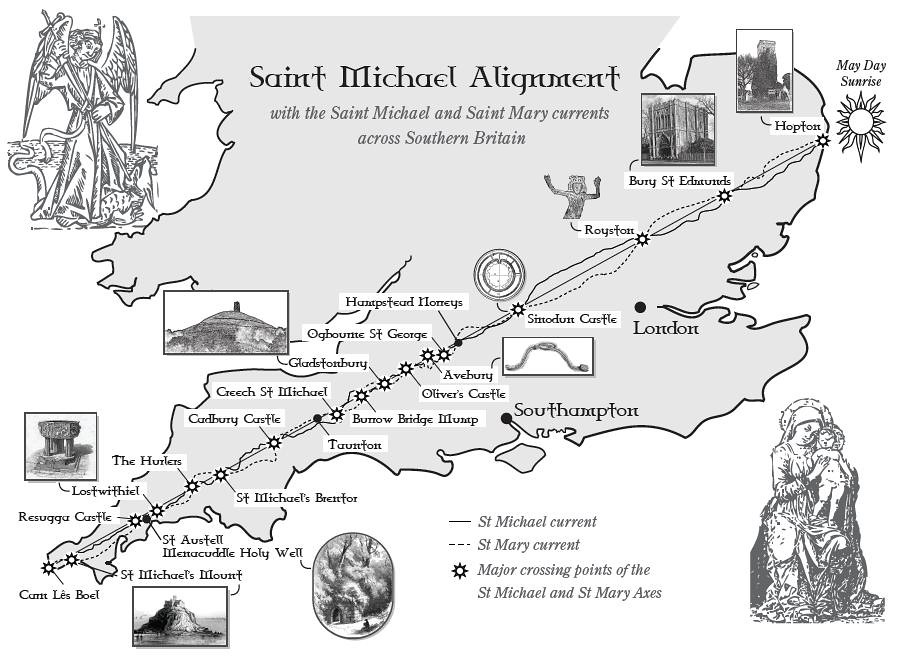Mont St Michel is actually over a hundred miles south of the St Michael Line (although it does have historical links with Cornwall's St Michael's Mount).
The map on the spiralwave website illustrates the problem with leylines - these sites are not on the same straight line! So which sites are included is purely subjective.
My computer progs had a variable 'error factor', and - surprise, surprise - the larger the error I allowed, the more leys I found!
What really convinced me that leys are just random alignments was the fact that I found just as many when I used things like phone boxes and pubs/hotels instead of ancient sites like churches, etc!
EDIT: The fact that the St Michael line is one of the longest lines in southern Britain is the reason it contains so many sites. My analysis of Cornish sites found many more leys with a SW-NE orientation - purely because this reflects the shape of the peninsular. (A NW-SE direction quickly ends up in the sea!)
I happened to see part of a BBC tv programme tonight that had some quite-stunning footage taken by drone camera whilst a group of modern-day pilgrams stride out the 7km over the sands to the iconic
Mont St Michel (see
http://www.bbc.co.uk/iplayer/episode/b08y6771 ) .
No mention in this Christian tv programme of ley lines (of course) but plenty of explanations regarding the historical and ancient religious links between Mont St Michel and the Cornish version (both island, and priory) at St. Michael's Mount, near Land's End (
@rynner2 you may be interested).
It's many years since I was down near the Cornish 'Michaelmount', and also quite a while since I was drawing attention to the new-to-me historical/geographical parallels between these two places (all of which I was quite-oblivious to, but
are in reality fully-documented). A link to my previous post on this...
http://forum.forteantimes.com/index.php?threads/the-lone-coastguard-ii.58311/page-17#post-1496024
It's fascinating to hear that the French Abbot sent the Saint Michel island over the Channel to Cornish St. Michael's Mount, to toughen them up.
Anyway: I know there is a lot of doubt and discreditation regarding ley lines, but they still fascinate me (even if they become totally-debunked, they are still interesting
concepts).
The St Michael (Ley) Line is an especially-interesting one (yes, I know, any points can be joined-up to form conjuctions and lines, but it is still intriguing).
And in any case, it's a long time since we've had any ley line lore upon the Forum (who knows, it might ignite an article within the pages of FT itself, on this quintessentially-Fortean topic).
I was intrigued to read in this article
http://bigthink.com/strange-maps/527-the-st-michael-line-a-straight-story that allegedly The Line also passes through Mont St Michel, over in France.
Now, I do doubt this: but, the idea is so gripping as a concept, and magnified by those intrepid BBC Songs of Praise pilgrims tonight striding along the water/sand in a 7km straight line to Mont St Michel, perhaps with a straight line behind them, all the way to Land's End and Hopton/Bury St Edmunds...well, it was all just a bit of a Fortean moment.

Please do pitch-in with your opinions / perspectives / responses. As I'm sure you will!




